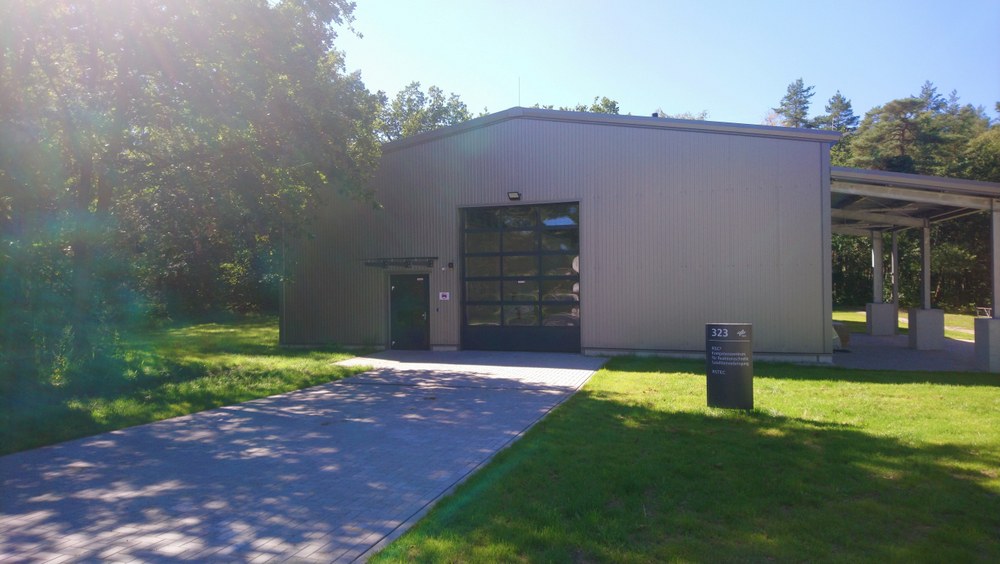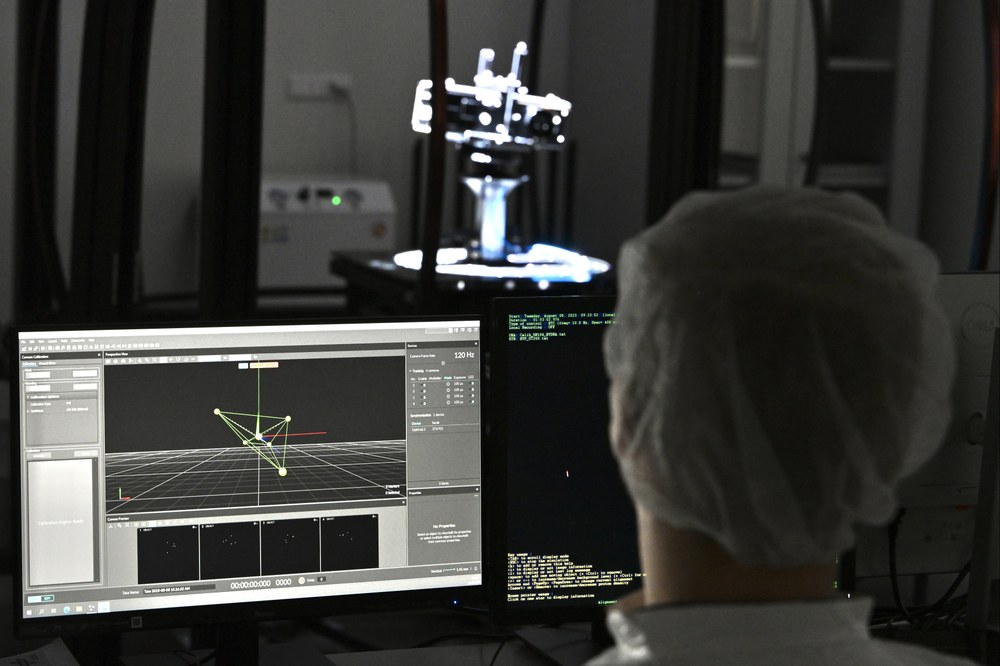Responsive Space Research & Technology Center (RSTEC)
Research about technologies and concepts for a resilient space infrastructure and the responsive provision of space-based capabilities requires research done on ground.
For this purpose, a research environment was set up at the DLR site in Trauen (Lower Saxony). The RSTEC (Responsive Space Research and Technology Centre) houses clean room laboratories totalling 4 clean rooms of approximately 40 square meters each within an air-conditioned rapid construction hall.

In RSTEC hands-on research activities on small satellites are carried out together with industry, in order to be able to react in a more responsive manner to upcoming space capability demands:
- Accelerate satellite integration and test cycles through hardware-in-the-loop tests
- Standardised interfaces, modularity and plug & play methods between payloads and satellite platforms
- Process optimisation and automation in satellite development
- Service life, storage and reactivation tests in the event of a responsive demand
The laboratories are equipped with the following facilities:
Attitude control testbed
The attitude control testbed simulates the attitude dynamics of a satellite in a representative orbital environment.
Satellites (models) of various categorys can be rotated almost friction-free around three axes on the air bearing table (mounting plate can be rotated 360 degrees around the vertical axis and tilted horizontally by approx. 25 degrees)

Integration laboratory of the RSTEC
The RSTEC integration laboratory houses satellite platforms from various manufacturers with different functions, sizes and performance. These provide a hardware-in-the-loop test environment as a basis for research and for evaluating and analysing.
Vibration test system
In order to test mechanical stresses on main structures, subsystems and components with their various load scenarios, one of our clean rooms is equipped with a powerful 35 kilonewton vibration test system.
This allows vibration tests to be carried out to simulate dynamic mechanical loads such as those that occur during rocket launches.
Thermal vacuum chamber
In contrast to mechanical tests, thermal tests are essential to qualify a satellite for future use in space. The harsh, inhospitable space conditions with enormous temperature gradients, the vacuum and different radiation sources constantly affect the thermal balance of the satellite and its subcomponents.
For the purpose of simulating this space environment, a high-quality thermal vacuum system complements our test system portfolio. The customized setup meets our future mission and research requirements and includes the following core components:
- thermal vacuum chamber with a capacity of approx. 250 litre, including a retractable thermal plate, which enables a test volume of approx. 700 x 300 x 300 Cubic millimeter to be accommodated
- high-precision process thermostat
Climate chamber
Due to recurring thermal load cycles, flight hardware in aerospace technology is subject to high quality requirements in terms of material and durability.
In addition, there is a climate chamber for thermal testing and environmental simulation. Precisely because a satellite undergoes many temperature cycles within a day in its low-Earth orbit, this facility is predestined for thermal cycling testing and thus provides information on the lifetime durability of flight models and their subcomponents.
The test chamber volume of > 300 litres enables testing of small satellites in temperature ranges from -40 degrees Celsius to +130 degrees Celsius.
Thanks to its extensive equipment, the climate chamber is ideally suited for qualification and acceptance tests.
